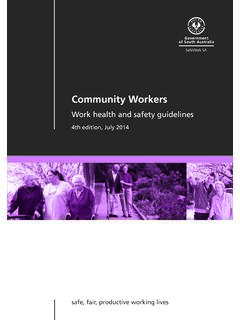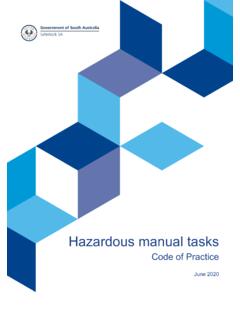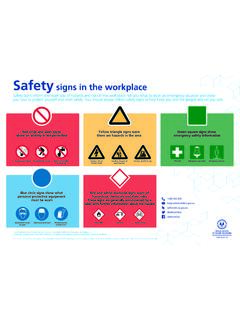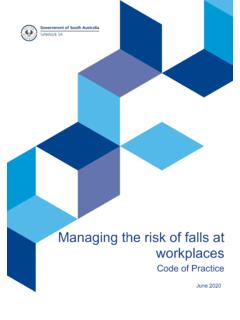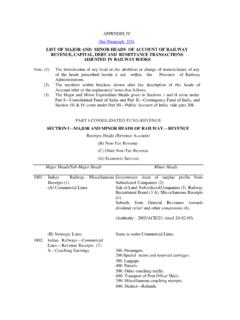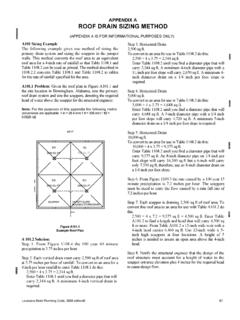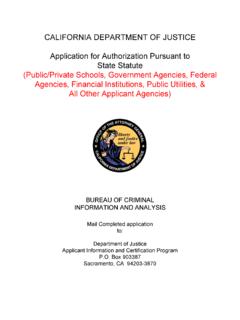Transcription of Model Code of Practice: How to manage work health and ...
1 How to manage work health and safety risks code of Practice June 2020 This code is based on a national Model code of practice developed by Safe work Australia under the national harmonisation of work health and safety legislation and has been approved under section 274 of the work health and Safety Act 2012 (SA), following the legislated consultation. This code of practice commenced in South Australia on the date it was published in the Government Gazette, 4 June 2020. Creative Commons This copyright work is licensed under a Creative Commons Attribution-Non-commercial International licence.
2 To view a copy of this licence, visit In essence, you are free to copy, communicate and adapt the work for non-commercial purposes, as long as you attribute the work to Safe work Australia and abide by the other licence terms. Contact information Safe work Australia | | Contents Foreword .. 4 1. Introduction .. 5 Who has duties for managing work health and safety risks?.. 5 What is involved in managing risks? .. 7 When should a risk management approach be used? .. 10 2. Step 1 How to identify hazards .. 11 How to find hazards.
3 12 3. Step 2 How to assess risks .. 14 When should a risk assessment be carried out? .. 14 How to do a risk assessment .. 15 4. Step 3 How to control risks .. 18 The hierarchy of control measures .. 18 How to develop and implement control 21 How to ensure controls remain effective .. 23 5. Step 4 How to review controls .. 24 6. Keeping records .. 25 Appendix A Glossary .. 26 Appendix B Examples of the risk management process .. 28 Example 1 .. 28 Example 2 .. 31 Example 3 .. 34 Appendix C Assessing how things can go wrong .. 37 Appendix D Risk register.
4 38 Amendments .. 39 How to manage work health and safety risks code of Practice Page 4 of 39 Foreword This code of Practice on how to manage work health and safety risks is an approved code of practice under section 274 of the work health and Safety Act (the WHS Act). An approved code of practice provides practical guidance on how to achieve the standards of work health and safety required under the WHS Act and the work health and Safety Regulations (the WHS Regulations) and effective ways to identify and manage risks. A code of practice can assist anyone who has a duty of care in the circumstances described in the code of practice.
5 Following an approved code of practice will assist the duty holder to achieve compliance with the health and safety duties in the WHS Act and WHS Regulations, in relation to the subject matter of the code of practice. Like regulations, codes of practice deal with particular issues and may not cover all relevant hazards or risks. The health and safety duties require duty holders to consider all risks associated with work , not only those for which regulations and codes of practice exist. Codes of practice are admissible in court proceedings under the WHS Act and WHS Regulations.
6 Courts may regard a code of practice as evidence of what is known about a hazard, risk, risk assessment or risk control and may rely on the code in determining what is reasonably practicable in the circumstances to which the code of practice relates. For further information see the Interpretive Guideline: The meaning of reasonably practicable . Compliance with the WHS Act and WHS Regulations may be achieved by following another method if it provides an equivalent or higher standard of work health and safety than the code . An inspector may refer to an approved code of practice when issuing an improvement or prohibition notice.
7 Scope and application This code is intended to be read by a person conducting a business or undertaking (PCBU). It provides practical guidance to PCBUs on how to manage risks to health and safety. Other approved codes of practice should be referenced for guidance on managing the risk of specific hazards. This code may be a useful reference for other persons interested in the duties under the WHS Act and WHS Regulations. This code applies to all types of work and all workplaces covered by the WHS Act. How to use this code of Practice This code includes various references to the legal requirements under the WHS Act and WHS Regulations.
8 These are included for convenience only and should not be relied on in the place of the full text of the WHS Act or WHS Regulations. The words must , requires or mandatory indicate a legal requirement exists that must be complied with. The word should is used in this code to indicate a recommended course of action, while may is used to indicate an optional course of action. How to manage work health and safety risks code of Practice Page 5 of 39 Who has duties for managing work health and safety risks? Duty holders who have a role in managing work health and safety risks include: persons conducting a business or undertaking (PCBUs) designers, manufacturers, importers, suppliers and installers of plant, substances orstructures, and and other persons at the workplace also have duties under the WHS Act, such as the duty to take reasonable care for their own health and safety at the workplace.
9 A person can have more than one duty and more than one person can have the same duty at the same time. Person conducting a business or undertaking WHS Act section 19 Primary duty of care A PCBU must eliminate risks in the workplace, or if that is not reasonably practicable, minimise the risks so far as is reasonably practicable. The WHS Regulations include more specific requirements for PCBUs to manage the risks of hazardous chemicals, airborne contaminants and plant, as well as other hazards associated with the workplace. PCBUs have a duty to consult workers about work health and safety and may also have duties to consult, cooperate and coordinate with other duty holders.
10 Examples of where a PCBU will have a health and safety duty include when: the PCBU engages workers to carry out work the PCBU directs or influences workers in carrying out work other people may be put at risk from work carried in their business or undertaking, and the PCBU manages or controls a workplace or fixtures, fittings or plant at the WHS Act section 27 Duty of officers Officers, such as company directors, have a duty to exercise due diligence to ensure the PCBU complies with the WHS Act and WHS Regulations. This includes taking reasonable steps to gain an understanding of the hazards and risks associated with the operations of How to manage work health and safety risks code of Practice Page 6 of 39 the business or undertaking, and ensure the business or undertaking has and uses appropriate resources and processes to eliminate or minimise risks to health and safety.
